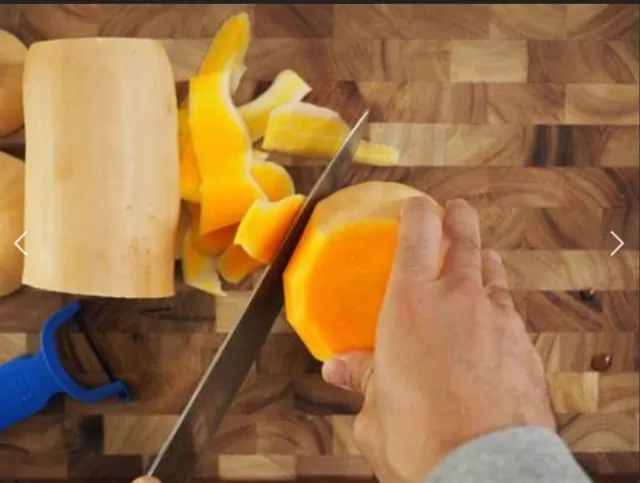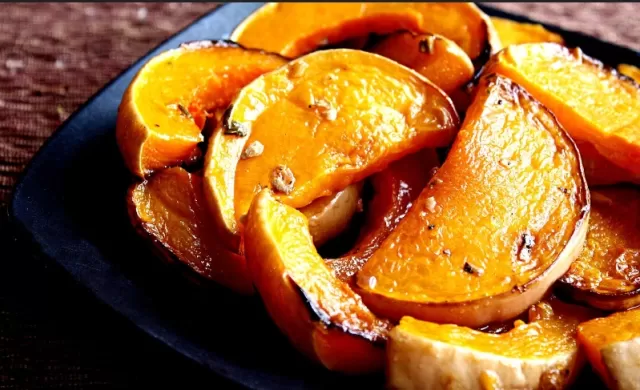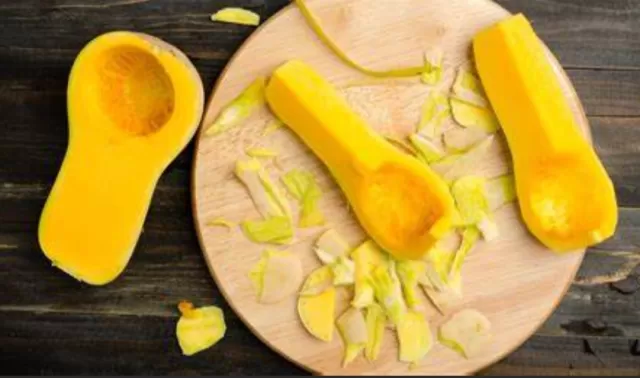Mastering Butternut Squash: Chef’s Tips for Expert Cutting. The allure of savoring tender, nutty, and sweet roasted butternut squash is undoubtedly exciting, but the prospect of navigating the journey from whole vegetable to culinary delight can be intimidating. The question of how to cut a butternut squash poses a challenge for many cooks. With its large and dense nature, handling this versatile vegetable requires some know-how to ensure a safe and efficient process. Fortunately, there are chef-approved techniques that can guide you through the task, making it more approachable and enjoyable.
Discovering the art of cutting a butternut squash involves a combination of skill and precision. By following these expert-endorsed techniques, you can confidently and safely transform this robust vegetable into the star of your culinary creations. Whether you’re preparing comforting soups, hearty stews, or delightful roasted dishes, mastering the art of cutting butternut squash opens up a world of culinary possibilities.
Join us on a journey through these chef-approved methods, demystifying the process and empowering you to confidently embrace the joy of working with butternut squash in your kitchen. Let the sweet and nutty flavors of this versatile vegetable become a staple in your cooking repertoire as you conquer the challenge of handling it with finesse and ease.
Efficient Butternut Squash Preparation: Essential Tools for Cutting and Peeling

Embarking on the culinary journey of cutting and peeling butternut squash demands a well-equipped workspace and the right tools to ensure safety and efficiency.
Stable Workspace: Large cutting board with Grip.
A spacious cutting board forms the foundation of your workspace, providing ample room to tackle the task at hand.
To prevent slips and slides during the cutting process, ensure the board is stabilized. Damp paper towels, tea towels, or a piece of rubber drawer liner all serve as effective tools to keep the cutting board firmly in place.
Chef’s Knife: Precision and Versatility.
A sharp 10- to 12-inch chef’s knife takes center stage as a crucial tool for cutting through the robust texture of butternut squash.
Olivia Roszkowski, a chef-instructor of plant-based culinary arts, emphasizes the importance of a sharp blade and recommends either sharpening your knife or honing it on a steel before diving into the squash. This tool provides precision and versatility, making it one of the most valuable assets in the kitchen.
Vegetable Peeler: Safety First.
To facilitate the peeling process and minimize the risk of slips or drops, a sharp vegetable peeler is indispensable.
Opt for a Y-style peeler for a user-friendly experience, allowing you to effortlessly drag the peeler down the squash instead of pushing it away. Choose a peeler that aligns with your comfort and skill level.
Damp Dishcloth: Residue Management.
Squash tends to secrete a sap-like residue, intended to protect its flesh but often posing a challenge during preparation.
To counteract this, keep a hot, damp dishcloth within reach. This simple yet effective tool serves as a quick solution to wipe away any sticky residue, ensuring a clean and comfortable experience for your hands, knife, and cutting board.
By assembling these essential tools, you create a well-prepared and secure environment for handling butternut squash, turning a potentially daunting task into a manageable and enjoyable culinary endeavor.
Mastering Butternut Squash Prep: A Step-by-Step Guide

Armed with the right tools, the process of cutting, peeling, and cubing butternut squash can be a straightforward and satisfying culinary endeavor.
Follow these steps to navigate the task with precision:.
Trim the Ends:.
Use your knife to trim both ends of the squash.
Pierce through the skin with the tip of the knife, using the section close to the handle for control and stability.
Peel the Squash:.
Steady the squash on the cutting board or hold it firmly in your hand.
Employ short and swift motions with your vegetable peeler.
If needed, use a sharp knife to shave off any thicker peel.
Consider wearing disposable gloves for an added layer of protection against slips.
Cut the Squash in Half:.
For larger squash, cut it in half crosswise to create a flat and stable surface.
Place the squash horizontally on the board.
Enter the flesh halfway from above with the tip of your knife.
Use the palm of your hand to press the knife through the squash, applying pressure with your shoulders for control.
Remove Seeds and Fibrous Webbing:.
Stand each half upright and cut it in half lengthwise.
Scoop out the seeds and fibrous webbing using a large spoon.
Rinse and save the seeds for roasting as a snack.
Cut into Slices:.
Take each quarter and place it parallel to the cutting board.
Cut 1/4-inch or 1/2-inch thick slices crosswise for various applications like sandwiches, wraps, and salads.
Cut into Cubes:.
Place each quarter parallel to the cutting board.
Cut horizontally into 1-inch slices and then vertically into 1-inch slices.
This results in uniform cubes, perfect for showcasing in various dishes, achieving caramelization in the oven, or enhancing soups, stews, salads, or tagines.
Following these steps, you’ll not only handle butternut squash like a pro but also open up a world of culinary possibilities with this versatile ingredient.
Exploring Creative Ways to Prepare Butternut Squash

Beyond the conventional methods of cutting and cubing, butternut squash opens up a world of culinary possibilities with innovative preparation techniques.
Here are some creative approaches to bring out the best in this versatile ingredient:.
Roasting:.
No need to peel before roasting if you’re aiming to puree or liquify the flesh.
After removing the seeds, place the squash cut side down on a lined baking tray.
Roast until the flesh is tender, allowing you to easily scoop it out.
This method is excellent for dessert fillings, butternut squash soup, mash, toppings for shepherd’s pie, or as an addition to oatmeal or brownie batter.
The peel aids in the cooking process, essentially allowing the squash to steam in its own shell.
Grating:.
Utilize a box grater to create small, thin shreds of squash.
Incorporate the grated squash into risottos, veggie burger mix, meatballs, latkes, or bread doughs.
The small shreds cook quickly and seamlessly melt into various dishes.
For a unique visual effect, add grated butternut squash to mac and cheese for the illusion of unmelted, golden cheddar cheese shreds.
Spiralizing:.
Use a spiralizer to transform butternut squash into “noodles.”.
These squash noodles serve as a low-carb alternative to traditional wheat pasta.
The resulting noodles, with their extra nuttiness and sweetness, make a delightful addition to ramen broth or pasta dishes, offering a fun and flavorful twist.
By embracing these alternative preparation techniques, you can unlock the full potential of butternut squash, introducing new textures and flavors to a variety of dishes—from comforting soups to creative desserts and Beyond.
*The information is for reference only.